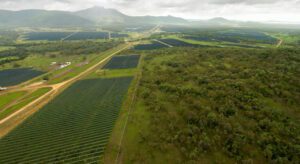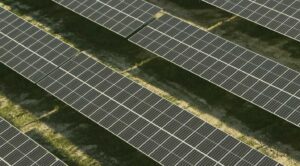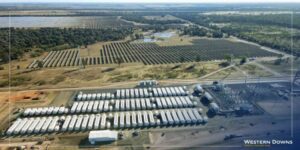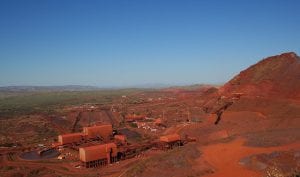The Australian Energy Market Operator has issued a new and broader warning to solar project developers in north-west Victoria and south-west NSW, saying that new projects could face added costs and further delays until a new impact assessment is completed.
Two weeks ago, as RenewEconomy reportedly exclusively, five solar farms in the West Murray region of the grid – Broken Hill, Bannerton, Wemen, Gannawarra and Karadoc – had limits imposed that cut their capacity in half ( a total of about 170MW) because of new modelling that suggested voltage oscillation and system strength issues could emerge under certain situations.
AEMO, the local networks and the solar project owners say they are working to try to resolve the issue quickly, and hope to find a solution within weeks, and suggest the issues are unique to this particular area. But late on Thursday AEMO issued an update that suggested more solar projects in the pipeline could face delays and added costs.
“Developers should be aware that instability issues could increase the cost and extend the timing of inverter-connected generation projects in the West Murray area,” AEMO said.
“All projects at the commissioning stage will be re-assessed for any contribution to voltage oscillations and to reconfirm compliance with performance standards before progressing further.”
It did not name those projects, but some in the West Murray region looking to finalise commissioning in coming months include Yatpool, located near Karadoc, Cohuna near Gannawarra, and the Kiamal solar project near Ouyen, south of Mildura, although this project will already has a synchronous condenser in place.
AEMO further advised: “Other developers interested in connecting generation in the West Murray area are encouraged to contact their local NSP or AEMO before making significant financial commitments, to discuss how they might be able to progress their project.”
Inverter based technologies include wind farms, and battery storage facilities, but as this graph above illustrates, most of the proposed new developments in the region are large-scale solar projects.
There are more than 2.3GW of proposals in the affected areas. it is understood that the concerns reflect only solar farms at this stage. And it is unclear if this is the fault of inverters, the weak nature of the area’s grid, or a combination of both.
The blue circles represent completed projects, the red circles those completed and in the process of commissioning, orange is for applications and the green circles are proposals that have reached the inquiry stage at AEMO. It is unclear to what extent projects across the border in NSW are affected, as was the Broken Hill solar farm.
AEMO says in its latest notice that it will not be able to progress any assessment of those proposed performance standards without a complete, site-specific PSCAD model – a highly detailed and complex process.
- A full system strength impact assessment will be required for all new and modified connections proposed. It is likely that system strength connection works or remediation schemes will be needed.
- The AEMO document does not make it clear what that means, but it would likely point to either adjustments to inverter settings, or more significantly, the addition of equipment such as synchronous condensers, which cost on average around $25 million each.
- AEMO said most inverter-connected generation in the West Murray area is likely to be impacted by thermal or stability constraints at times.
The problems in the West Murray region is an unexpected addition to the growing list of hurdles and challenges being faced by current and proposed wind and solar projects, much of it the result of long-term planning, particularly in infrastructure, by Australia’s principal energy institutions and regulatory bodies.
As ITK analyst David Leitch notes in our recent Energy Insiders podcast, these challenges should have been anticipated because the law requiring the current level of renewables has been in place since 2012 – yet regulators and rule-makers have done little – no long-term planning, and have failed to keep up with required rule changes.
Ironically, AEMC chair John Pierce was speaking on the ABC and writing in the AFR this week talking of the “urgent need’ to redesign the rules that would facilitate the shift to new technologies, particularly “distributed” resources like rooftop solar, battery storage and electric vehicles. Energy experts have been pleading with the AEMC to act for years, but it has been incredibly slow.
At least now, it seems to have woken up to the need to act.
That podcast also includes an interview with industry veteran Rob Grant, who now heads a group of 20 large investors with more than $30 billion of existing and planned projects, who have joined together to call for changes to another major investment hurdle, marginal loss factors.
The AEMC this week was to have delivered a draft decision on Thursday, thought to be a recommendation for the status quo, but has now deferred that decision so it can do more research.
The same thing happened with the so-called 5-minute rule, which was set to be rejected before a delay and review led to an agreement to change the settlement timings to a 5-minute period from the current 30 minute period, albeit not to mid 2021. This rule is expected to help new and fast moving technologies like battery storage, and remove some of the gaming that has marred the wholesale market for years.









